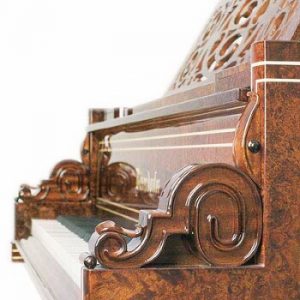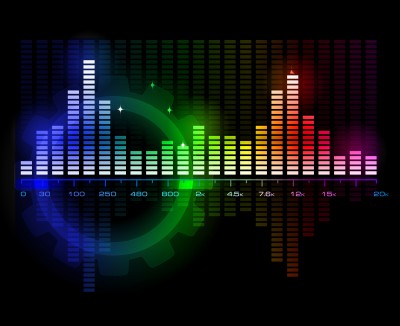Impressionism in music
 The classic expression “musical impressionism” found in the work of C. Debussy; his features also appeared in the music of M. Ravel, P. Duke, F. Schmitt, J. J. Roger-Ducas and other French composers.
The classic expression “musical impressionism” found in the work of C. Debussy; his features also appeared in the music of M. Ravel, P. Duke, F. Schmitt, J. J. Roger-Ducas and other French composers.
Debussy is considered to be the pioneer of musical impressionism, which has enriched all aspects of contemporary composing skills – melody, harmony, orchestration, form. His innovative experiments are partly inspired by the outstanding discoveries of Russian realist composers, primarily M. P. Mussorgsky. At the same time, he embraced the ideas of new French painting and symbolist poetry. Debussy has written many piano and vocal miniatures, several pieces for chamber ensembles, three ballets, a lyric opera “Pelleas and Meli-zanda”.
Musical impressionism inherited many features of the art of late romanticism and national music schools of the XIX century. (“The Mighty Handful”, F. Liszt, E. Grieg, and others.). At the same time, the Impressionists contrasted with the art of restrained emotions and transparent, stingy texture, fluent changeability of images, to the clear relief of the contours, the exquisite materiality and oversaturation of the musical palette of the late romantics.
The work of impressionist composers has in many ways enriched the expressive means of music, especially the sphere of harmony, which has attained great beauty and sophistication; the complication of chord complexes is combined in it with the simplification and archaization of modal thinking; in the orchestration, pure colors, capricious highlights, cramped and elusive rhythms prevail. The brilliance of the harmonic and timbre means is highlighted: the expressive significance of each sound and chord is enhanced, and previously unknown possibilities of expanding the modal sphere are revealed. The special freshness of the Impressionist music was given by their frequent reference to song and dance genres, to elements of the musical language of the peoples of the East, Spain, and early forms of Negro jazz.
Spiritual pictures of nature with surprising, almost visible concreteness are transmitted in his orchestral plays: “Preludes to the Afternoon of the Faun” ”, in the cycle“ Nocturnes ”(“ Clouds ”,“ Celebrations ”and“ Sirens ”), three sketches“ Sea ”, cycle “Iberia” (three sketches of nature and life of southern Spain), as well as in the piano miniatures “Island of Joy”, “Moonlight”, “Gardens in the Rain”, etc. In the work of Maurice Ravel (1875-1937) reflected the later era. The drawing of his writings is sharper, sharper, the colors are clearer and more contrasting – from tragic pathos to ulcers irony. But in his composer’s style there is also subtle sound writing, a complex and variegated play of colors typical of musical impressionism. In the best piano pieces of Ravel the whimsical iridescence of sounds inspired by living nature dominates (“Play of Water”, “Sad Birds”, A boat in the middle of the ocean “). Throughout his life, the composer developed the motifs of his beloved Spain. This is how the Spanish Rhapsody for Orchestra, the comic opera Spanish Hour, Bolero appeared.
Ravel paid much attention to the genres of dance music. Among his several ballets, the ballet-fairy tale “Daphnis and Chloe”, created by him in collaboration with the Russian troupe S. P. Dyagilev, stands out. Ravel knew the secrets of musical humor well, he wrote music for children with love. Such are his pieces for the piano “Mother Goose”, transformed into a ballet, or the opera “Child and Magic”, in which the Watch and the Couch, the Cup and the Teapot playfully act as characters. In the last years of his life, Ravel turned to more modern, rhythmically acute musical means, in particular, to the intonations of jazz (sonata for violin and piano, two concertos for piano).
The traditions of impressionism, started by French masters, found their continuation in the work of composers of various national schools. They were originally developed by M. de Falla in Spain, A. Casella and O. Respie in Italy, S. Scott and F. Dilius in England, and K. Szymanowski in Poland. The impact of impressionism was experienced at the beginning of the 20th century. and some Russian composers (N. N. Cherepnin, V. I. Rebikov, S. N. Vasilenko). A. N. Scriabin independently formed features of impressionism combined with fiery ecstasy and violent volitional impulses. The original achievements of French impressionism are noticeable in the early works of I. F. Stravinsky (the ballets Firebird, Petrushka, and the opera Nightingale).



